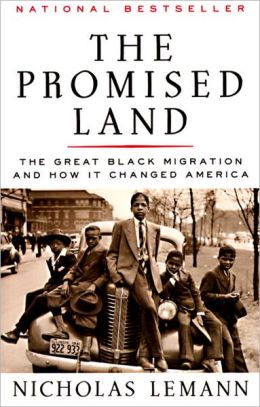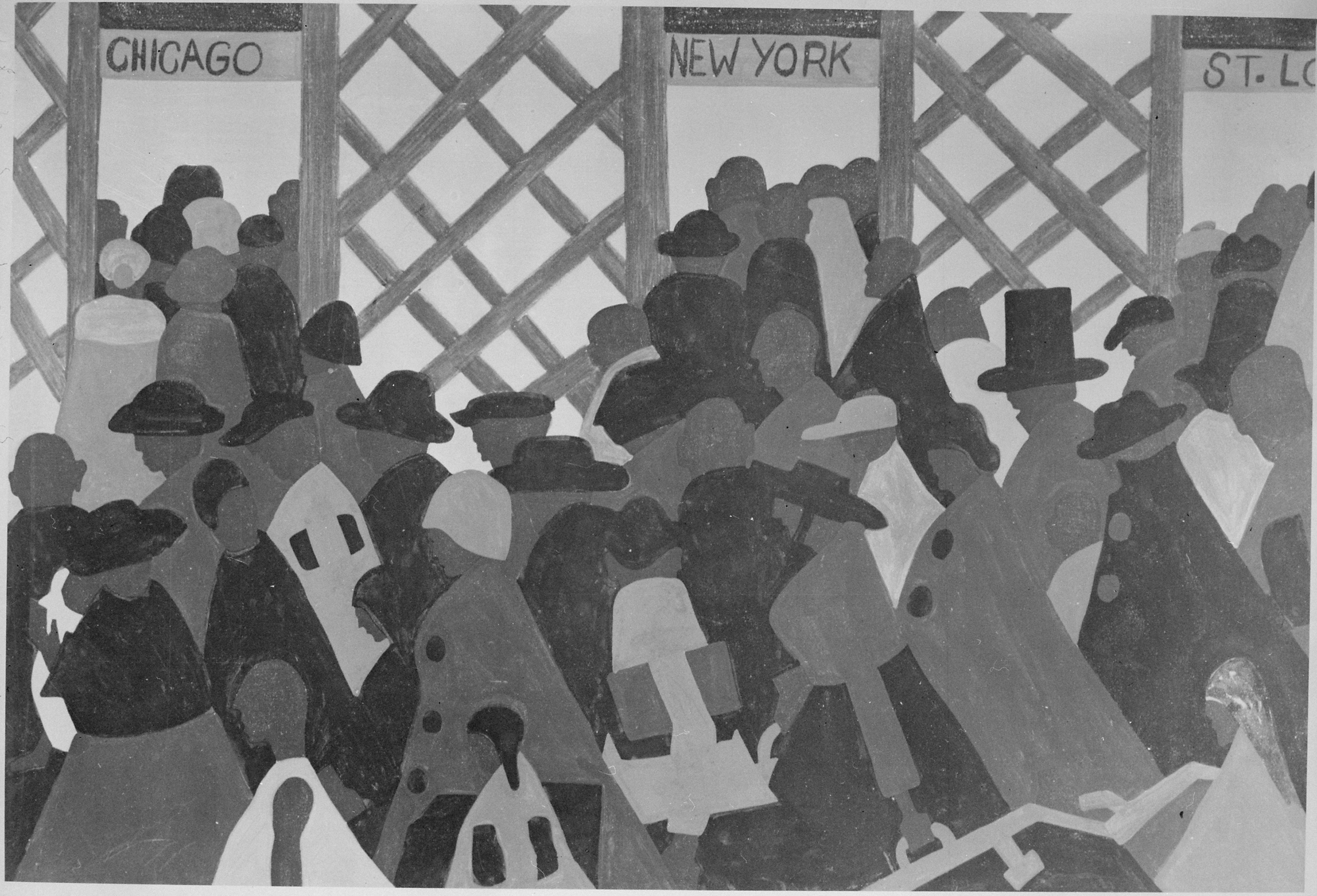The Promised Land: The Great Black Migration and How It Changed America
by Nicholas Lemann
Roaring 20's-WWII
Ethnicity & Race
Politics

Thesis:
As Chicago, New York and other cities saw their black populations expand exponentially, migrants were forced to deal with poor working conditions and competition for living space, as well as widespread racism and prejudice. During the Great Migration, African Americans began to build a new place for themselves in public life, actively confronting economic, political and social challenges and creating a new black urban culture that would exert enormous influence in the decades to come.

Specific examples/evidence that supports the
thesis:


Summary:
 This book covers the Great Black Migration mostly from 1940's onward. The author takes specific examples of people moving from Mississippi to Chicago to exhibit the larger phenomenon. The stories demonstrate how racism and racial tensions become paramount issues in the North as well as the South. The author found that officials in the North were slow to respond to mounting tensions.
This book covers the Great Black Migration mostly from 1940's onward. The author takes specific examples of people moving from Mississippi to Chicago to exhibit the larger phenomenon. The stories demonstrate how racism and racial tensions become paramount issues in the North as well as the South. The author found that officials in the North were slow to respond to mounting tensions.
After reconstruction, share cropping became the new system to continue free African American labor on plantations in the South. Instead of direct slavery, share croppers worked an entire season for the plantation owner, agreeing to get paid once the harvest occurred. In the mean time, they borrowed money for goods/food to survive and once the crop was sold the plantation owner would settle up. However, most often, the share cropper got virtually nothing or found they owed more than they made.
The plight of the sharecroppers increased due to technology in harvesting cotton, as well as a boll weevil epidemic that caused massive crop damage in 1898. In the 1920's-1940's the Hobson Plantation in Mississippi experimented with mechanized cotton growing and harvesting equipment. Eventually this developed into a fully mechanized system to grow and harvest which made the need for labor and share cropping dissipate.
With less job opportunities in the rural south and so many share croppers struggling to get by and the rise of industrialization in the North, many African Americans began to make their way north.
This extended the issues of racism and segregation on a large scale to the Northern half of the United States.
Cities began to section off parts of the city for exclusively black Americans to live.
This extended the issues of racism and segregation on a large scale to the Northern half of the United States.
Cities began to section off parts of the city for exclusively black Americans to live.
What does this tell us about Ethnicity & Race in the Roaring 20’s-WWII?
Lemann places much of the blame for black urban poverty and social pathology on both the oppressive racism of the South, which handicapped black migrants from birth, and on the exclusionary racism of the North, which tried to bar blacks from jobs, neighborhoods, and schools. He believes that the destitution of Northern blacks in the ghetto in the 1980's and 90's is a result of a long history of struggle in the sharecropper system and then the racially segregated North where oppurtunities for advancement quickly dried up. The welfare state became the crutch and a staple of urban black survival.
What does this tell us about Politics in the Roaring 20’s-WWII?
Lehmann discovered a pattern of black dependence on the welfare state while doing an article for a magazine. To investigate this further he interviewed families going back to the Great Black Migration. He discovered that sharecropping instilled a since of dependency because they were not payed a wage until after harvest meaning they took loans from the land owners for everything they needed to survive. Coming to the North they found jobs were difficult to find, and fair treatment and wages were non-existant. Black were still segregated to their own parts of town and authorities did little to fight against the illegal segregation and discrimination occuring in the North. As situations worstened many black migrants had no choice but to rely on the welfare state, a pattern which has continued today.
What parts of the book can be applied to lectures?
General Thoughts:
Excerpts from Book Reviews:
"From his account one could easily get the impression that the mechanical cotton picker alone was responsible for the migration, and that it all began in 1940. Yes, the picker was important and so were the 1940s, but the migration had been going on for decades, and there were many causes. Marcus Garvey, who had thousands of Black followers in northern cities in the 1920s, is not mentioned. The words "boll weevil" do not appear. Nor was the Community Action Program all there was to the War on Poverty."
My Highlighted Passages:
No comments:
Post a Comment